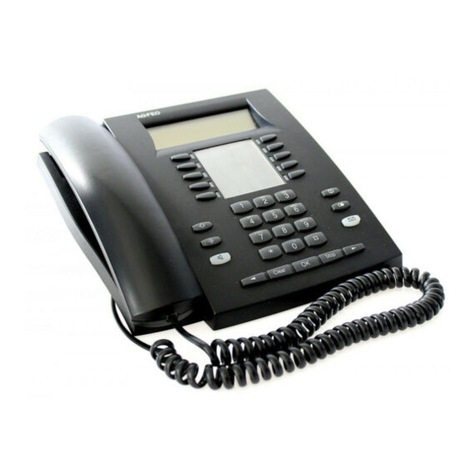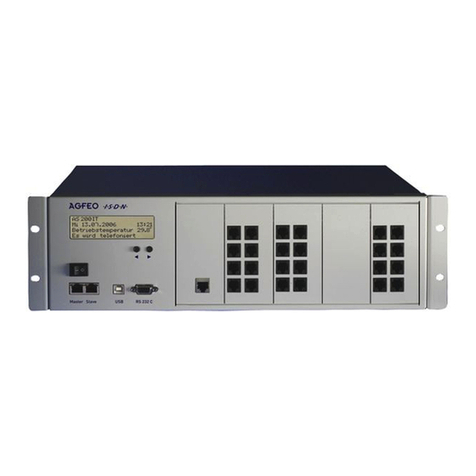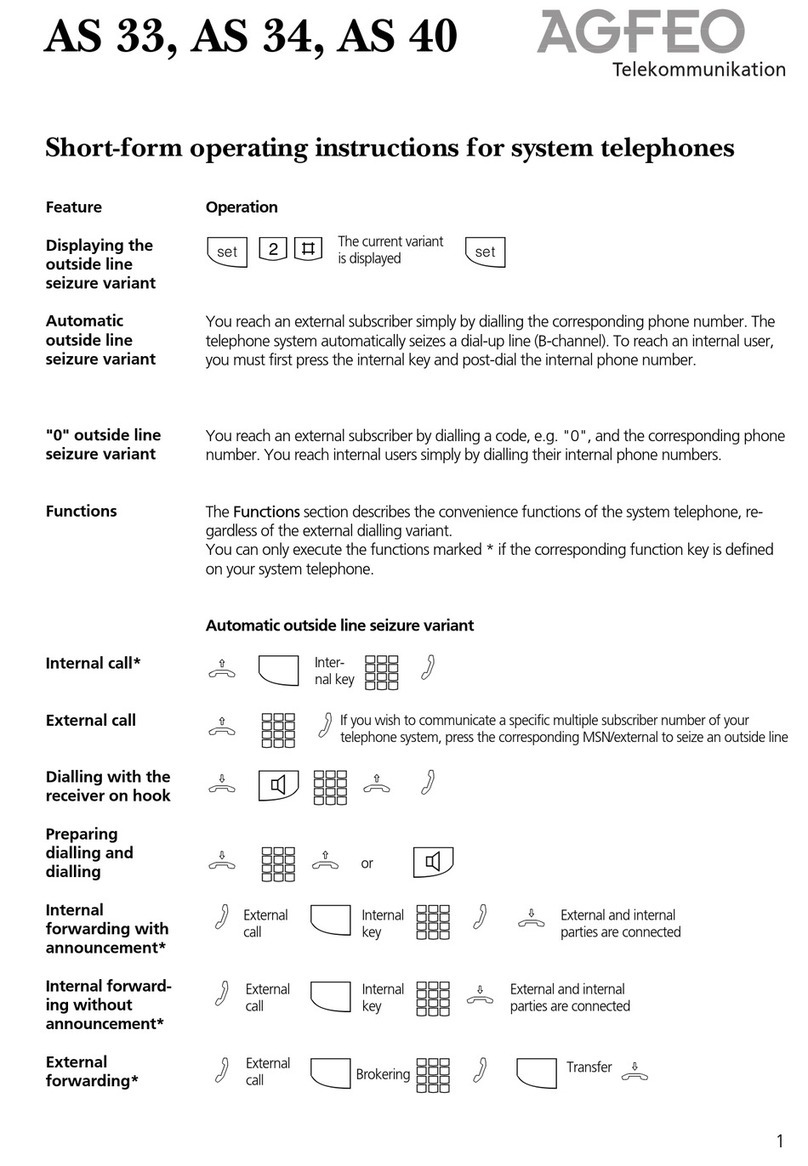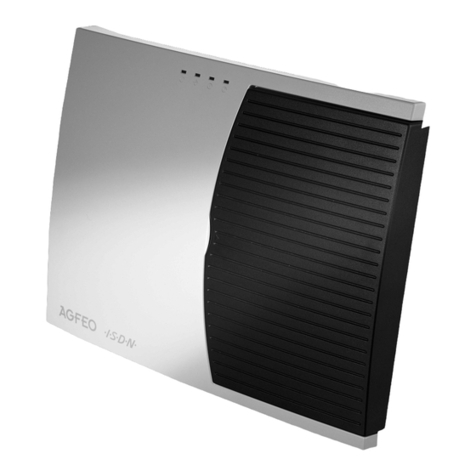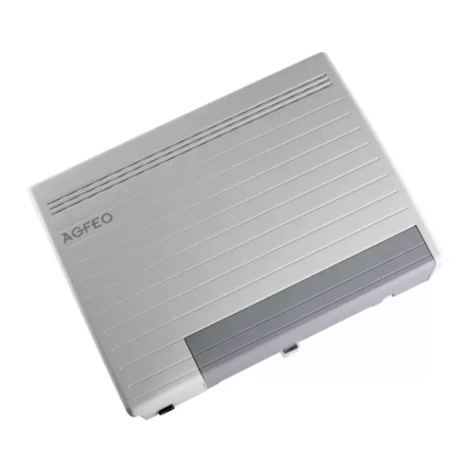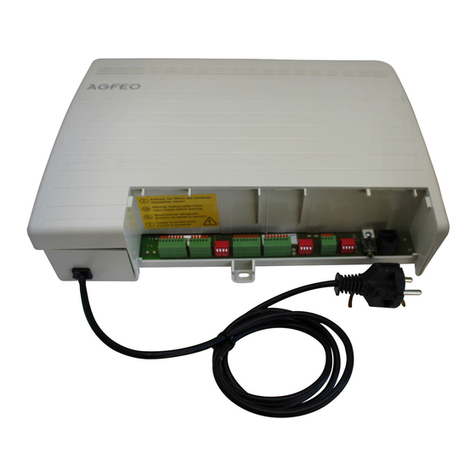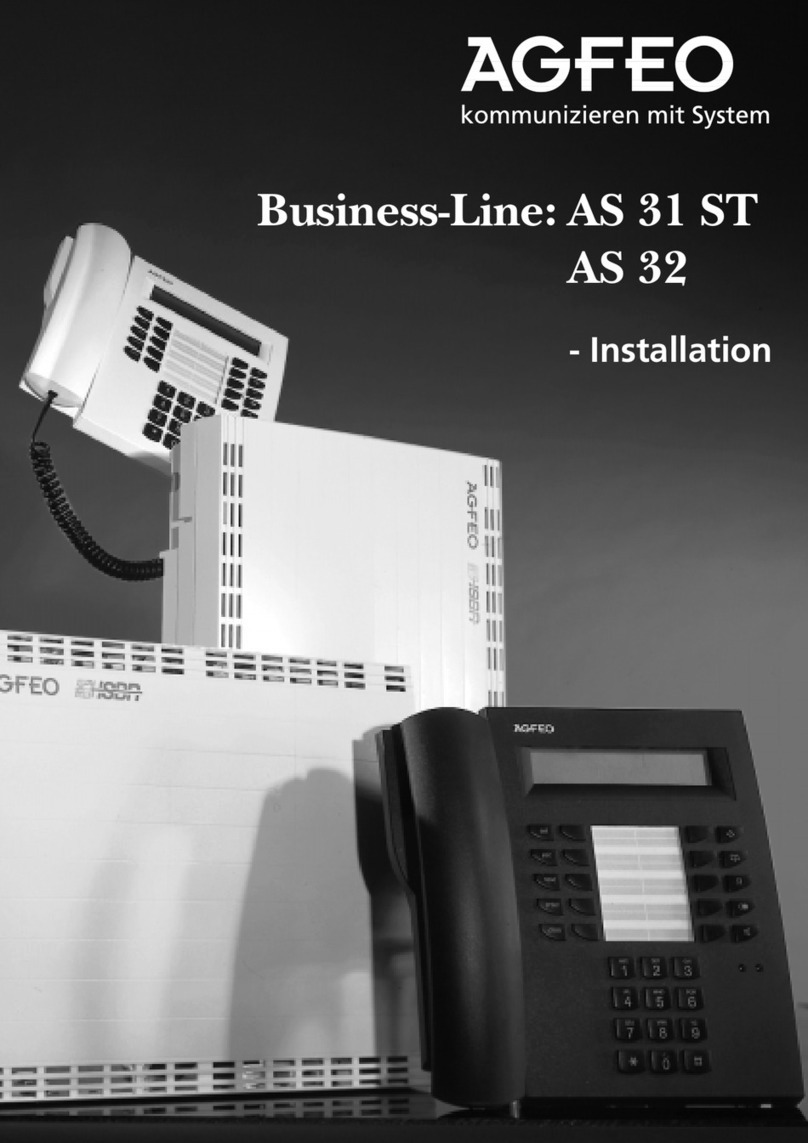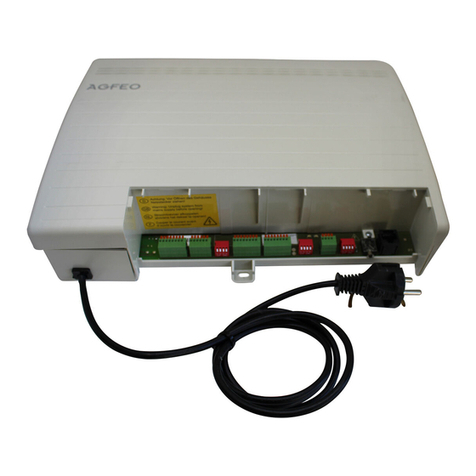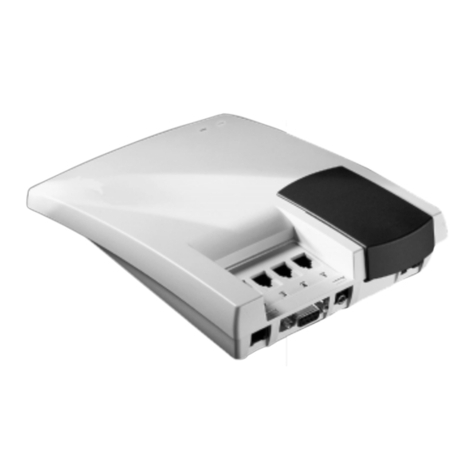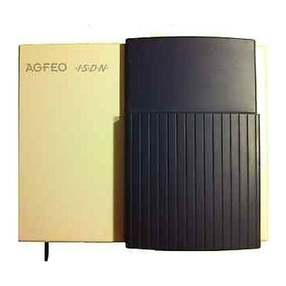Introduction
I
I - 8
You may connect all approved analog ter-
minals to the analog parts of your tel-
ephone system that you are also permitted
to operate on the public telecommunication
network. These may be normal telephones
(a/b telephones), answering machines,
group 2 and 3 fax machines and analog
modems, for instance.
The dialling method employed by the ana-
log terminals may consist of the pulse dial-
ling method or of the dual tone
multifrequency method (DTMF). DTMF is the
faster dialling method. The telephone sys-
tem detects the respective dialling method
automatically.
From an analog terminal, you can reach any
internal user free of charge by dialling the
appropriate internal phone number. You
reach an external subscriber after seizing a
dial-up line (B channel) by dialling the ex-
change code 0and the external phone
number.
If you set "spontaneous exchange line
seizure with internal" for your telephone,
you must press the Rkey (hash key) before
the internal phone number. Internal dialling
is not possible on telephones, particularly
telephones using the pulse dialling method,
that do not have a Rkey or which do not
support these functions.
You operate the functions of the telephone
system by pressing the Skey (star key) and
by dialling a code digit. On telephones, par-
ticularly telephones that use the pulse dial-
ling method that do not have a Skey or
which do not support these functions, you
must press the digits 99 instead of the
Skey.
Please note: for the "inquiry" function,
standard analog telephones using DTMF
must have a signal key (inquiry key r)
with the flash function.
This instruction manual always specifies the
operating steps for standard analog tel-
ephones set to DTMF. On standard analog
telephones set to pulse dialling, you do not
need to press the rkey when making an
inquiry.
You can also use the functions of a standard
analog telephone (e.g. redial, abbreviated
dialling) in conjunction with your telephone
system. Please refer to the operating instruc-
tions for the telephone concerned for details
of these functions.
Details of how to operate the functions of
your telephone system that you are able to
use from a standard analog telephone set to
DTMF are given in this instruction manual
and in the "short-form operating instruc-
tions for analog and ISDN terminals".
When operating your telephone system, pay
attention to its audible signals. You hear the
acknowledgement tone when you have
successfully completed a code digit proce-
dure. Otherwise, you will hear the error
tone.
AS 40: The telephone system communicates
the counting pulses to analog terminals
featuring a display of connection charges
(charge pulses).
For data transfer via the analog ports, the
telephone system supports the V.90 stand-
ard (up to 56600 bps, reduction possible by
transmission path and cables to 33600 bps
V.34+). When operating a modem, it is
imperative to configure the modem to blind
dialling because most modems do not
detect the dial tone of a telephone system.
On modems that operate with the Hayes
command set, blind dialling is set by means
of the X0..X4 parameters.
Important notes on using analog terminals
